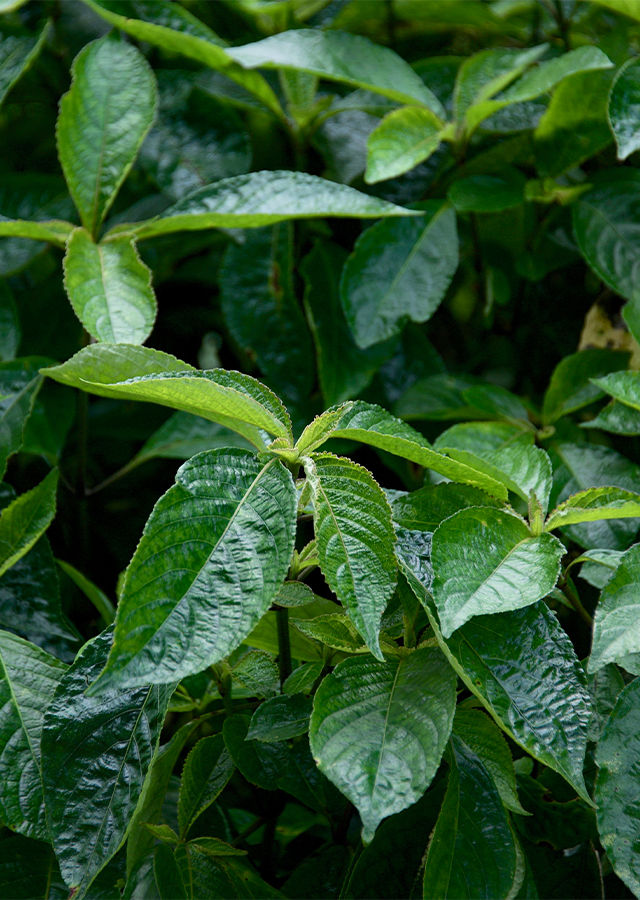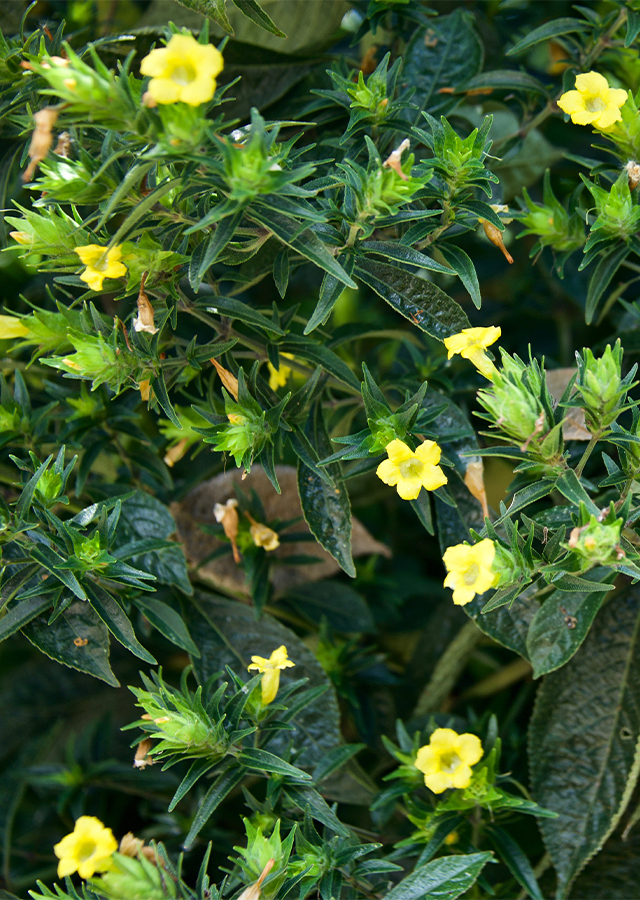Traditional Herbs from Strobilanthes crispa
kidney_stone
- Wash thoroughly 10 g of kejibeling leaves, 20 g of cat's whiskers leaves, 10 g of hibiscus leaves, and 3 g of jasmine leaves.
- Boil all the ingredients in 600 ml of water until it boils and the water is reduced to 200 ml .
- Drink the concoction 3 times a day and then drink at least 1l of water a day.
hemorrhoids
- Clean 6 g of kejibeling leaves, 6 g meniran leaves, 3 g ginger rhizome.
- Boil all ingredients in 4 glasses of water, add 1 g tamarind and boil for 15 minutes, cool.
- Drink 3 times a day, 1\u20442 glasses each for 5 days.
What is Strobilanthes crispa Looks like??



Parts of Strobilanthes crispa that could be used
- Leaves
- Roots
Strobilanthes crispa Distribution
Kecibeling originates from Madagascar and spread to Indonesia and Malaysia. In Indonesia, its distribution covers the areas of Sumatra, West Java, Central Java, Sulawesi and Nusa Tenggara. Often planted as a hedge plant in yards or parks. This medicinal plant is also often eaten as fresh vegetables.Agroecology of Strobilanthes crispa
Grows well at an altitude of 50-1,200 m above sea level, annual rainfall 2,500-4,000 mm/year, sandy to clay soil texture, pH 5.5-7. Likes open places. Found growing wild in forests, riverbanks and sometimes planted in yards.
Morphology of Strobilanthes crispa
- Tap root, light brown.
- Segmented stem, round shape, rough hairs on the surface, green.
- Single leaves, arranged oppositely on short stems, leaf blades lanceolate, leaf veins pinnate, serrated edge, tip and pointed base, rough surface.
- Compound flowers, funnel-shaped, yellow or purple.
- Seeds round, flat, small, brown.
Cultivation of Strobilanthes crispa
- Vegetative propagation (cuttings).
- Stem cuttings for cuttings come from old branches, cut 20-25 cm long. The resulting stem cuttings can be planted directly in the ground to a depth of 6-8 cm.
- Harvesting is done by pruning plant shoots 20-30 cm long.
Strobilanthes crispa, more details :
Chemical Content of Strobilanthes crispaAlkaloids, tannins, saponins, flavonoids, polyphenols (tocopherol, cinnamic acid, phosphatide), catechins, caffeine, silicic acid, kercic acid.
Benefits of Strobilanthes crispa
Medicine for dysentery, diarrhea, kidney stones, diabetes, fever, lowers cholesterol, antioxidant, antibacterial, hemorrhoids, treats poisonous snake bites, laxatives urine, cures leukemia, prevents AIDS.
Simplisia of Strobilanthes crispa
- Select the shoots of kejibeling leaves and wash them clean.
- Arrange them in a tray and air dry for several days.
- Store in airtight plastic.
Another Facts for Strobilanthes crispa :
Synonym of Strobilanthes crispaHemigraphis crispa (L.) T.Anderson, Ruellia crispa L., Sericocalyx crispus (L.) Bremek.
Habitus of Strobilanthes crispa
Bush. Annual shrub, up to 1 m high
Habitat of Strobilanthes crispa
- Bushland
- Grassland
- Land
No comments:
Post a Comment